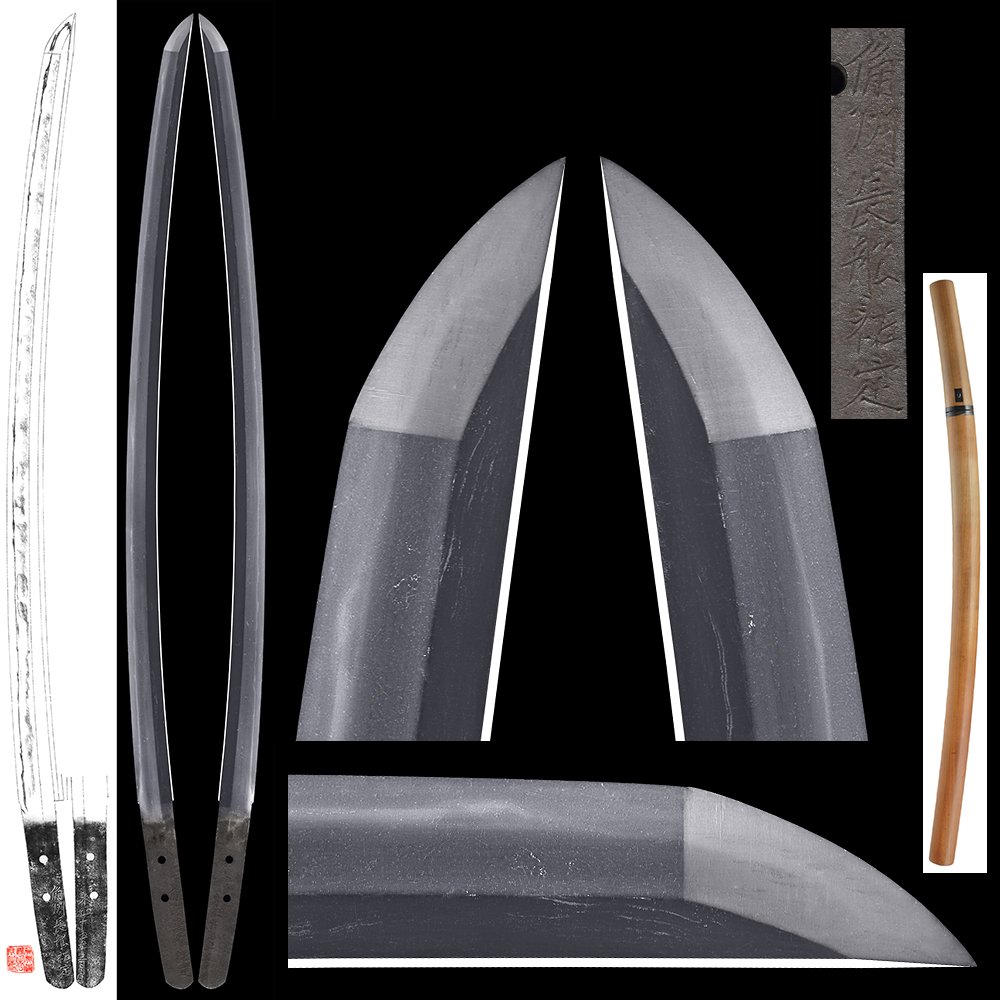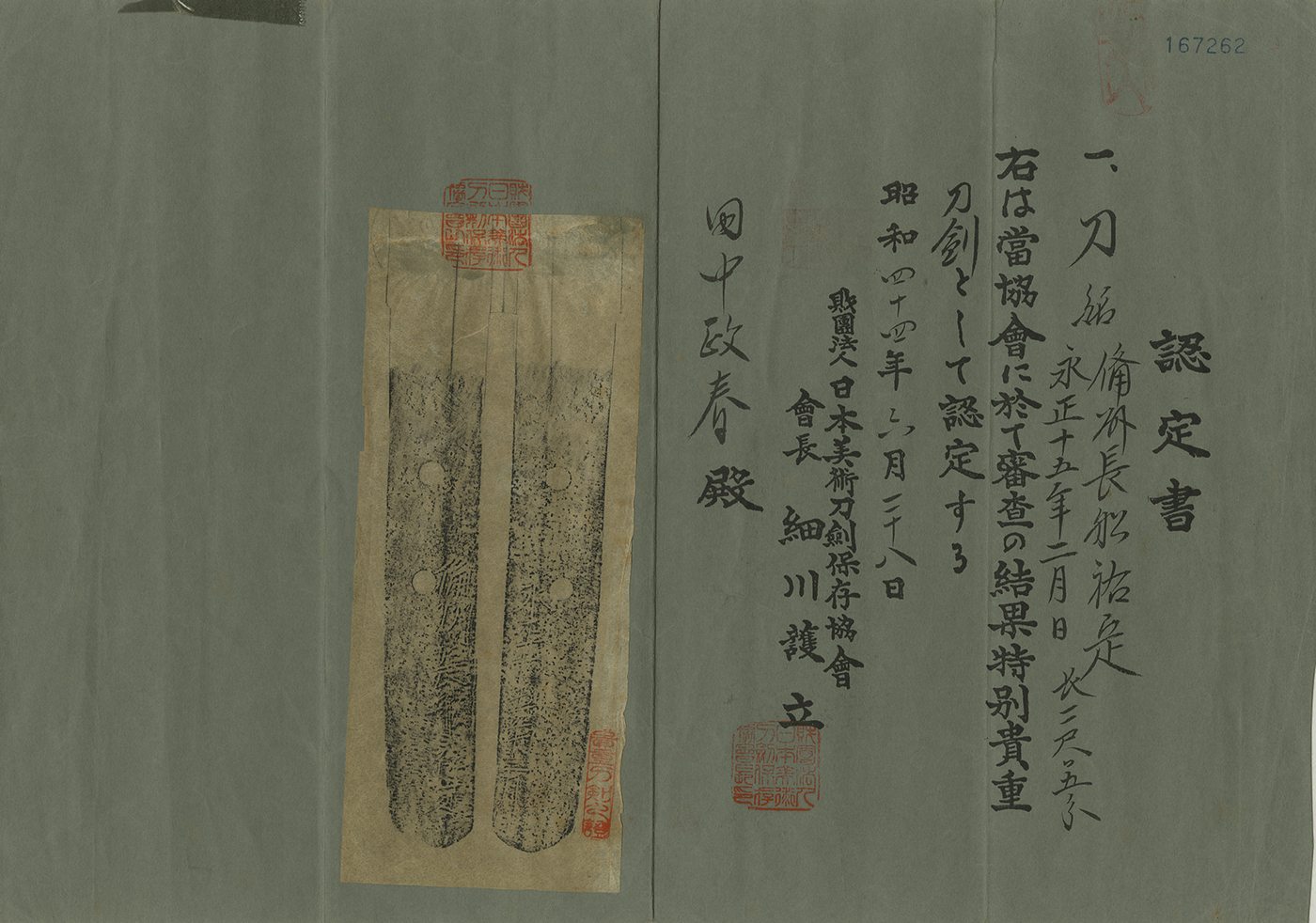Katana : Bishu Osafune Sukesada/Eisho 15 nen 2 gatsu hi
2017/01/24
Katana in Shirasaya with Koshirae(NBTHK Tokubetsu Kicho paper)
Signature : Bishu Osafune Sukesada
Eisho 15 nen 2 gatsu hi (February 1518)
(We divide 4 sections for each sword as Saijyo saku, Jyojyo saku
Jyo saku and regular saku)
This Bishu Osafune Sukesada belongs to Jyo-saku(high ranking) ranking.
The blade was polished.
habaki:silver single habaki.
Blade length : 62.3 cm or 24.52 inches.
Sori : 2.0 cm or 0.78 inches.
Mekugi : 2
Width at the hamachi : 2.90cm or 1.14 inches.
Width at the Kissaki : 2.03 cm or 0.79 inches.
Kasane : 0.68 cm or 0.26 inches.
Era Muromachi period Eisyo era.
Shape : The blade is regular sice with deep sori
which is called Katateuchi style.(battling with one hand)
Jitetsu :Koitame hada and komokume hada mixed with jinie attach
and Utsuri appear on the Ji.
Hamon : small niedeki suguha with small ashi work,
Boshi is komaru boshi.
Special feature : In the Muromachi period, Harima, Mimasaka and Bizen province
had been prospered under the protection of the Akamatsu family.
Above all, Bizen province has turned out a great many talented swordsmiths.
Supplying the demand of the Age of Provincial Wars in Japan,
a large number of swords were made there in the late Muromachi period.
Sukesada has become a synonym for the Osafune School though
the founder was Mitsutada. It is regrettable that a deluge devastated
the School in Osafune districts in Tensho era. Such is the way of the world
that even the Osafune School, that prosperity and power had been unparalleled,
perished in this way in the deluge. Old swords are all
that is left to tell how once the swordsmiths lived.
Generally speaking Bisyu mei(signature) is called Mass productive items
but Eisyo Bisyu mei signature is not Mass productive items.
This sword is good Jigane and clear nice Utsuri appear on the Ji.
Koshirae :
Tsuba :On the rpund shape iron tsuba, some samurais are fughting each oher
Fuchikashira :On the rounds shape iron tsuba, some samurais are fighting to the enemy with gold color.
Saya : Black roiro saya.
Menuki : dragons are engraved with gold color.
Historical background: At Eisyo 15th Daimyo Naritsuna Utsunomiya battled
with Satake big troop was given by Daimyo Naritsuna Utsunomiya.
NBTHK Tokubetsu Kicho paper
Aoi Art estimation paper : whole Oshigata.





